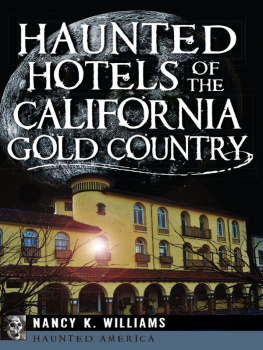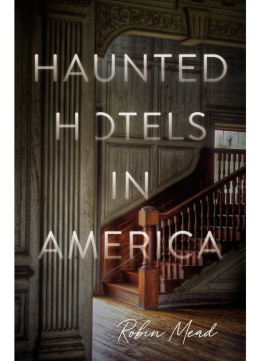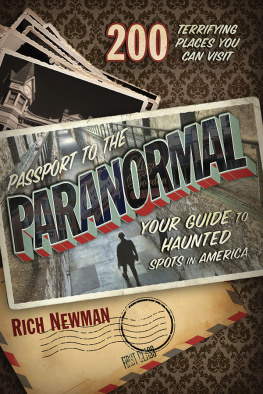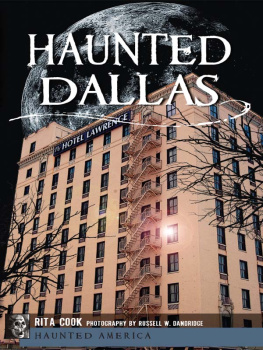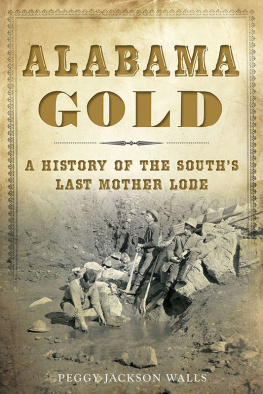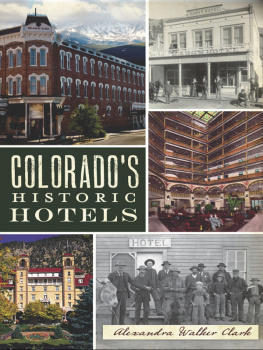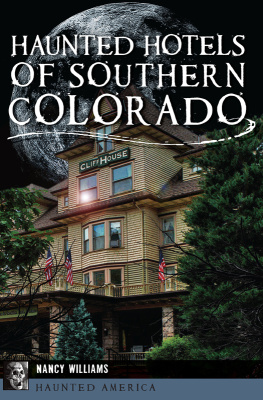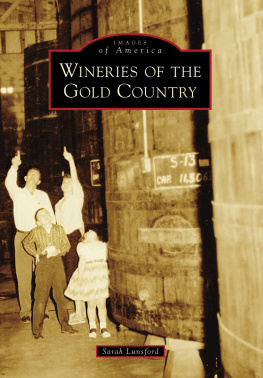

Published by Haunted America
A Division of The History Press
Charleston, SC 29403
www.historypress.net
Copyright 2014 by Nancy K. Williams
All rights reserved
Front cover: Sonora Inn, Sonora, California. Wendy Williams.
First published 2014
e-book edition 2014
ISBN 978.1.62584.971.7
Library of Congress CIP data applied for.
print edition ISBN 978.1.62619.438.0
Notice: The information in this book is true and complete to the best of our knowledge. It is offered without guarantee on the part of the author or The History Press. The author and The History Press disclaim all liability in connection with the use of this book.
All rights reserved. No part of this book may be reproduced or transmitted in any form whatsoever without prior written permission from the publisher except in the case of brief quotations embodied in critical articles and reviews.
This book is a promise kept.
It is dedicated to the memory of Jack C. Williams, my best friend.
A special thank you to my granddaughters:
Amanda: A dedicated ghost hunter, whos tireless and can walk miles around lakes, over hills and through museums.
Ashlynne: For funny songs, wishes on a star and rockin to Neil Diamond and the Stones.
CONTENTS
ACKNOWLEDGEMENTS
This book is the fulfillment of a promise that was made many years ago. Ive always been fascinated with the Gold Country, its history and human stories. My husband and I loved exploring it, and we mastered metal detecting and reading old maps. Our kids learned to pan for gold and treasured vintage bits of crockery and square nails as much as chocolate and chewing gum. Writing magazine articles about our Mother Lode adventures led to thoughts of a book, but it was always postponed. Then my husband became ill, and time ran out. My last promise to him was that Id finally write that book.
The years passed, and the book nagged now and then like a chronic toothacheone I avoided doing anything about. One day, I realized it had been twenty-six years since I made that promise, and it was time to keep it.
Thank you to my children, who helped me keep that promise: Tom, who kept my tired computer running, for his photographic expertise and many hours of editing, proofreading and handling the technical aspects of putting this book together. Thanks to Wendy for the photographs of the hotels today, memories of fun times and believing that Id write this book.
Thanks and much appreciation to Aubrie Koenig and Becky LeJeune, commissioning editors, for their patient guidance along the path to keeping this promise.
My thanks to the hotel owners, who allowed us to explore their halls, basements and attics and shared their stories. Thanks to everyone who gave us interviews and talked about their experiences.
Special thanks go to Peter Hertzog, Imperial Hotel, Amador City; Mahmood Ghani, Ione Hotel, Ione; Betty Reid, American River Inn, Georgetown; and Forrest Monk and Sarah Zahn, Hotel Jeffery, Coulterville.
The help of the historians throughout the Gold Country was invaluable. Their thorough research and determination to track down facts and old photographs is most appreciated. These tireless volunteers preserve priceless information about the Gold Country. Thank you to Jim Sneddon and Bill Anning, Tuolumne County Historical Society; Jon McCabe, El Dorado County Historical Society; Pat Chesnut, Nevada County Historical Society; Karen Nicholson and Danielle Ballard, Calaveras County Historical Society.
Many thanks to the paranormal investigators who have shared their findings and conduct their research with honesty and integrity. This book isnt a how-to guide for ghost hunters, and it doesnt discuss the various tools that are so valued by paranormal investigators. There are plenty of other publications that can guide you through the intricacies of the infrared cameras or thermo-imaging and show you how to use an EMF (electromagnetic field) meter or an EVP (electronic voice phenomenon) recorder.
INTRODUCTION
Gold was discovered in January 1848, and by 1849, about ninety thousand forty-niners had arrived in California. They headed for the Mother Lode, an area of about two hundred miles extending along the western slopes of the Sierra Nevada. Mexican miners coined the term La Veta Madre (the Mother Lode), referring to the incredibly rich vein of gold running through this area. Because there were so many offshoot gold deposits, some as wide as forty-nine feet, this entire gold-rich foothill region became known as the Mother Lode.
By 1855, over 300,000 people were swarming over the hills, burrowing into the ravines, crowding the riverbanks and sloshing about in the creeks, wielding gold pans and shovels. Everyone was looking for gold, but not everyone found it. Disgusted and discouraged, some turned to other enterprises, often opening a store where their first sale was their own prospecting equipment. Shrewd entrepreneurs reaped great profits with their mercantile, shipping and transportation businesses.
Some of the first women came with their husbands and used their ingenuity to earn money, while the men looked for gold. These women cooked meals and took in laundry and sewing. Others saved to open restaurants or boardinghouses. Within a short time, most Mother Lode towns had several boardinghouses, usually owned by women, and the one with the best cook always had a waiting list.
Fine hotels were built throughout the Gold Country to accommodate wealthy visitors and financiers, who expected more lavish accommodations than a miners boardinghouse. Soon hotels were welcoming railroad tycoons, presidents, rich speculators, merchants, celebrities, con men, card sharks, gamblers and even foreign royalty.
Gold fueled the regions growth, and towns popped up wherever it glinted. When the gold played out, these towns declined or were abandoned. Others were destroyed by fires and rebuilt, only to burn again. Of the 546 gold rush towns, almost 300 have vanished. Some that remain are little more than colorful names on a roadmap. Mother Nature has healed many of the wounds of the mining days, and the Mother Lode is one of the most scenic and historic areas of the United States.
The Golden Chain, Highway 49, winds and meanders through the rolling hills of the Mother Lode. It links charming villages of weathered cottages and intriguing shops with bustling county seats, proud of their gold rush origin. It passes through sleepy mining camps and the deserted remnants of boomtowns, consisting of a few tumbledown buildings with historic markers.
Take time to savor the past and explore the narrow, winding streets. Prowl through antique stores, seeking bargains and pouncing on treasures. If youre inclined, you can sample the best of the regions award-winning wineries and browse through the art galleries and bookstores. At the end of a relaxing day, dine by candlelight on world-class cuisine or grab a seat at an old boardinghouse table, just as miners did over a century ago.
As night falls, snuggle under the down quilts of a Gold Country hotel, meticulously restored to its original Victorian elegance. Or you can opt for a bed at one of the picturesque boardinghouses that were permanent homes for the work-weary men who toiled in the mines.
The Gold Countrys long-lived hotels and boardinghouses are full of the flavor and character of centuries pastand maybe a ghost or two. There are many rumors of otherworldly guests and tenants who have stayed on through the centuries, despite remodeling and renovations. There are whispers in empty hallways, unexplained dark shadows, heavy footsteps on the stairs when no ones in sight and wispy apparitions that roam in search of peace that has eluded them for so many years.
Next page
